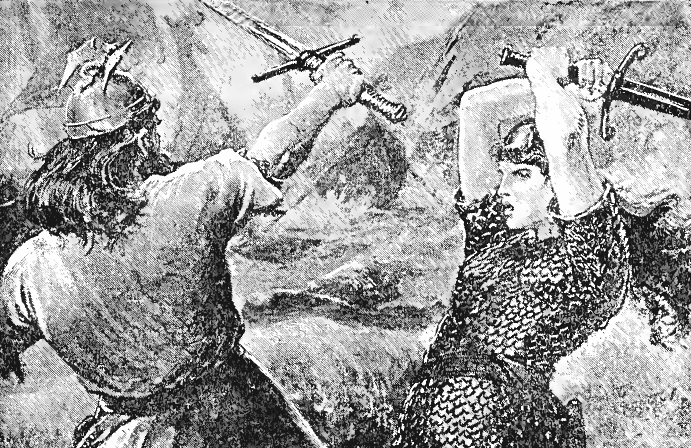<![CDATA[Researchers in a National Geographic documentary claim that the Viking sword, Ulfberht, was made by a process that wasn't supposed to be introduced for another thousand years. Ulfberht is about 1000 years old, but the composition of the metal that made the sword was so pure that it baffled scientists. This process of sword making wasn't supposed to be perfected until the dawn of the Industrial Age. Ulfberht was a double-edged sword and had its name inscribed onto the blade. Nowadays, the iron forging process is carried out by complex machines and processes that fuel the modern economy. However, in the olden days, iron forging was done by smiths using hammers and anvils. The hammers were used to compress and shape the metal into the desired shape. Modern machinery at forges heat the metal to 3000 degrees Fahrenheit to liquefy it, then the impurities are removed. To make the iron stronger, carbon is then added. The discovery of Ulfberht is such an anomaly because the technology of the time was not advanced enough to be able to heat iron to 3000 degrees. One would expect because the iron could not be heated to this temperature that Ulfberht should be impure. Blacksmiths of the time removed impurities by way of pounding the metal, which is less effective. Ulfberht has almost no slag, had a carbon content three times that of other metals produced in those days, and was made from a metal called "crucible steel". The documentary, entitled "Secrets of the Viking Sword", interviewed a modern blacksmith named Richard Furrer from Wisconsin who stated that making a similar sword is very difficult, even for him. Furrer is described as one of the few people on Earth capable of reproducing the quality of the sword. He praised the swordmaker, stating that making such a sword in those days is the stufff of legend, and the characteristics of the sword such as it being able to bend without breaking and be so sharp is almost supernatural. Furrer spent several days forging a sword similar to Ulfberht with the use of the technology that the medieval blacksmith may have used. He however used the technology in a different way than what most are used to. Furrer strategized his approach, ensuring that little mistakes were made. He states that making a sword of this quality is like surgery, when one simple mistake will kill progress entirely. At the end, he was able to reproduce the quality of the sword, which he states he was very fortunate to do. There is not much known about the process used by the original blacksmith and there is not much known about the blacksmith himself, but researchers have a hunch on where he learned his trade. The technique used by the blacksmith may have originated from the Middle East, as the Volga trade route began at around the same time when the Ulfberht swords started to appear. Over 170 of these swords have been found.]]>
Viking Sword Technology Beyond its Time
